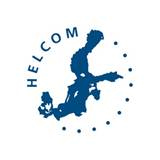
Baltic still one of the most polluted sea areas regarding radioactive contamination
Radioactivity in the Baltic Sea unbrokenly monitored for three decad
15 May 2014
Monitoring of radioactive substances in the Baltic Sea is one of the longest-lived, continuous activities of HELCOM, mainly thanks to the Expert Group on Monitoring of Radioactive Substances in the Baltic Sea (MORS EG), adjourning its 3-day Meeting today in Hamburg, Germany. Confidence level of HELCOM data on radioactivity is considered high, since the 28-year-old Expert Group has enabled the long term collection of unbroken data series from all coastal countries which are the Contracting Parties of the Helsinki Convention.
Planning for the next thematic assessment of long-term changes in radioactivity in the Baltic Sea, covering years 2011–13, was the main topic of the Meeting, along with the review of Cs-137 related core indicator as well as several fresh scientific reports by the Contracting Parties and International Atomic Energy Agency (IAEA). The region’s first joint efforts concerning radioactivity started in early 1980s by a project under IAEA, while MORS Expert Group had its first meeting shortly before the Chernobyl accident – in 1986.
“Generally there is a decreasing trend of concentrations of radionuclides in the Baltic Sea, after the steep rise caused by the Chernobyl accident. However, continuous monitoring of radioactive substances is still relevant due to many reasons, such as new nuclear facilities planned or under construction in several Baltic Sea states; decommissioning of old facilities; plans for storage of radioactive waste; and the fact that the Baltic is still one of the most polluted sea areas as regards radioactive contamination,” says Tarja Ikäheimonen, Chair of HELCOM MORS Expert Group.
While radioactive substances occur naturally in the environment there are also man-made radioactive substances in the Baltic Sea, mainly due to nuclear weapon tests in 1950–80 and the Chernobyl nuclear
power plant accident in 1986, as well as routine operations of nuclear power plants and research reactors. The latest HELCOM thematic assessment of long-term changes in radioactivity in the Baltic Sea was released last year.
Meeting documents will be available at the Meeting Site (MORS EG 4-2014)


